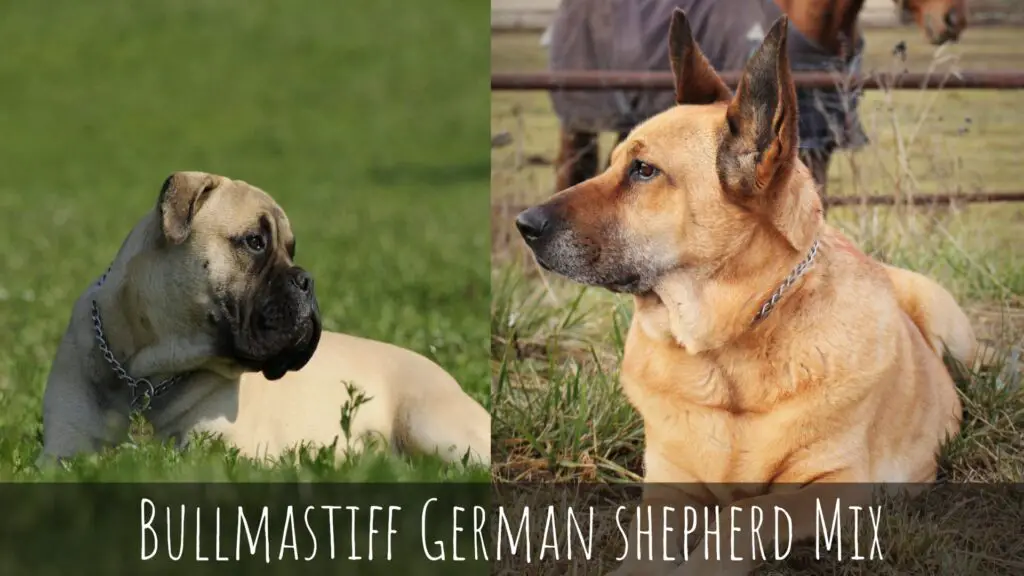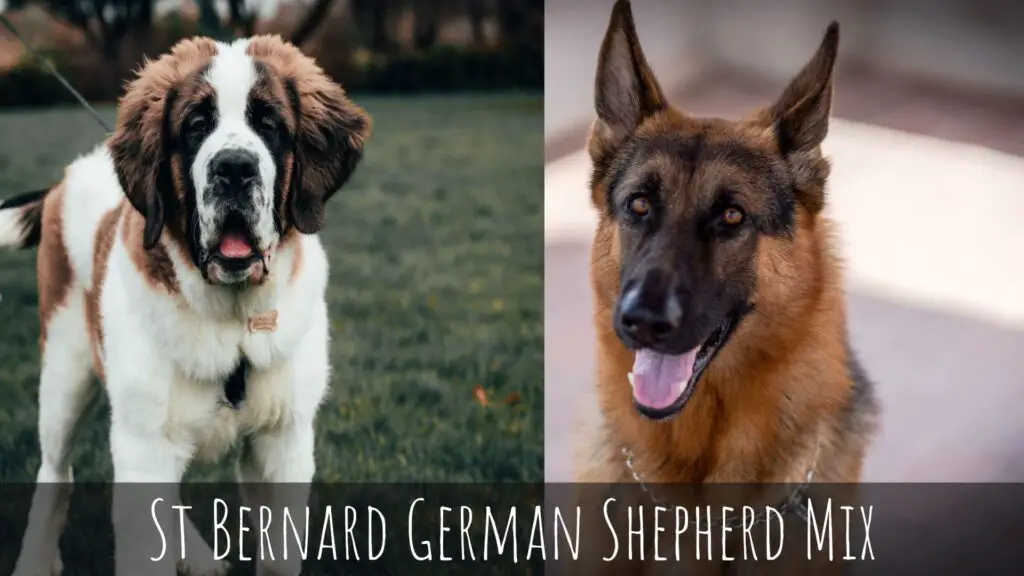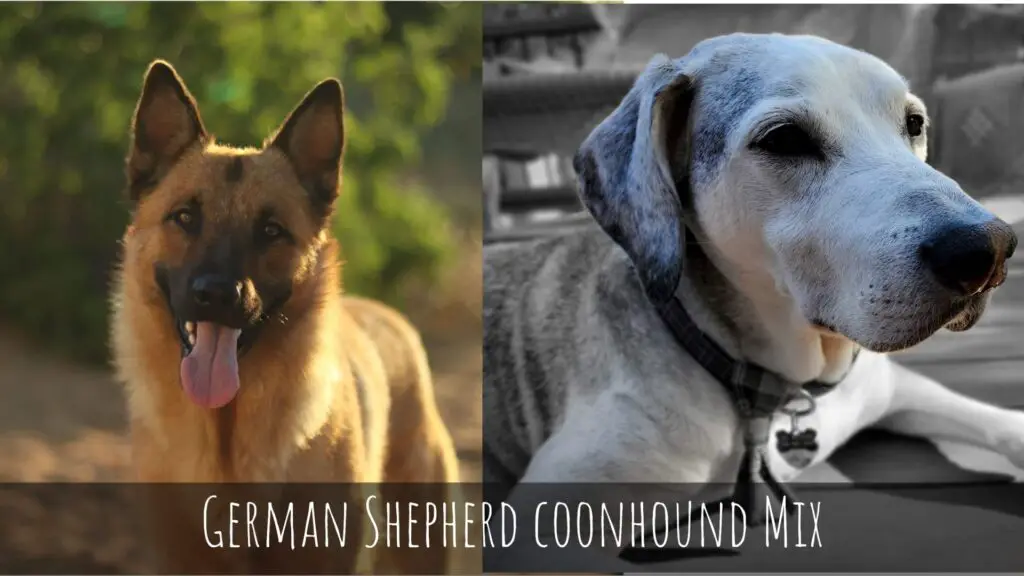DDR German shepherd, also known as the East German shepherd, is a big-boned and masculine dog breed popular for its high working drive and guarding abilities.
This dog is one of the three working lines of German shepherds. The other working line GSDs include the Czech working line and the West working line.
The German shepherd working line dog has strict breeding guidelines, which are always more strict than the show line. Besides being a highly prized dog, the DDR working line German shepherd is a reliable home companion who needs a family that will use its energy levels.
What’s all about the East German shepherd dog breed? Continue reading to learn more about this dog breed.
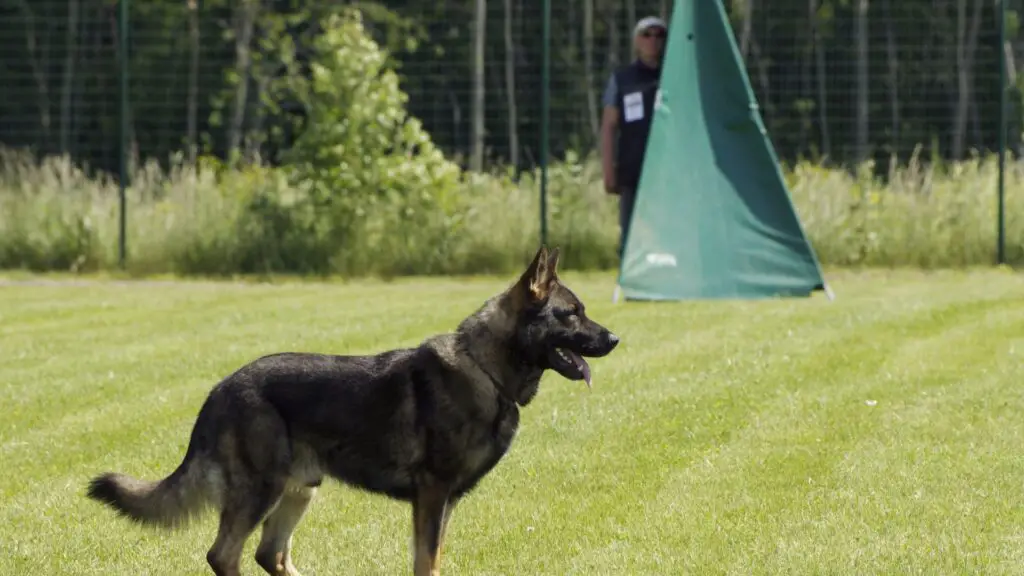
The Origin of the German shepherd
Every German shepherd traces its root to Horand Von Grafrath a Thuringian dog. He was big, with wolf-like features and spotted broad and erect ears.
One captain, max Von Stephanitz was attracted to this dog after attending a dog show. He bought this dog breed, where he started his breeding practices. He wanted to get a dog with the Thuringian and Württemberg features. All of these dogs were strong, had a high working drive, and were perfectly guard dogs.
From then, breeders from the USA and other European countries became much interested in this dog breed. Those who didn’t admire the working attributes of the German shepherd concentrated more on its appearance where it competed in dog show lines.
Hence from then, the GSD has always been classified under two groups, the working line German shepherd and the show line German shepherds.
Bred for their looks, show line GSD are friendly, and their back lines are more slopped than the working lines.
Furthermore, America show line GSD doesn’t have strict breeding standards compared to their European counterparts.
For the working lines, their breeding standards bar is set high. They have to be free of hereditary diseases, and any display of deformity in them is highly penalized.
Unlike their show line counterparts, these dogs are more built to work. You will often find them functioning as protection, guard, and search and rescue dogs. And, it’s not uncommon to find these dogs helping humans who have mobility issues.
Thus such dogs need to be of high caliber, free of joint issues or health defects that may derail them in their work.
Although they are loyal and friendly to their handlers, it’s not comparable to their counterparts in the show lines, as the working German shepherds are fierce and possess strong guarding instincts.
GSDs that you find in this line are the DDR German shepherds, West German shepherds, and the Czech working dogs.
The DDR German shepherd Bloodlines
The East German shepherd reign started around the 1940s. This dog originally worked in East Germany working as a border patrol dog. These dogs we highly favored for their working abilities and energy drive.
During the world war, this dog breed helped the army and the police department; they worked as messengers and still waded off intruders. Such attributes made this dog breed more popular.
However, after the world war ended, the worse came, the cold war.
During this period, Germany was divided into two, East Germany as known as the Deutsche Demokratische Republik, and West Germany.
These dogs worked as border patrol dogs guarding the high berlin wall. Their resilience to harsh temperatures, the ability to scale high heights, and strong biting pressure made them more popular during this era.
The East German communist party controlled all the breeding standards and guidelines of the DDR German shepherd from then. Again the breeding standards were set high as they didn’t want their rivals, the West Germans, to outdo them.
Thus the build, temperaments, and working drive of the DDR German shepherd were some of the issues this communist party concentrated on. They had to ensure they were of high standards. Low-energy dogs, dogs with hip and elbow dysplasia, were not allowed to breed.
End of an Era (The Downfall of the DDR German shepherd
The west and East Germany united in 1989. That implied the high demand for the DDR German shepherd had to drop. The reason being, there were no more 6-foot walls to scale or intruders to chase. With that, this dog almost became extinct. Some of these dogs were put down, others abandoned, and some sold at a throwaway price. However, through some collective measures of some breeders, the DDR didn’t become extinct.
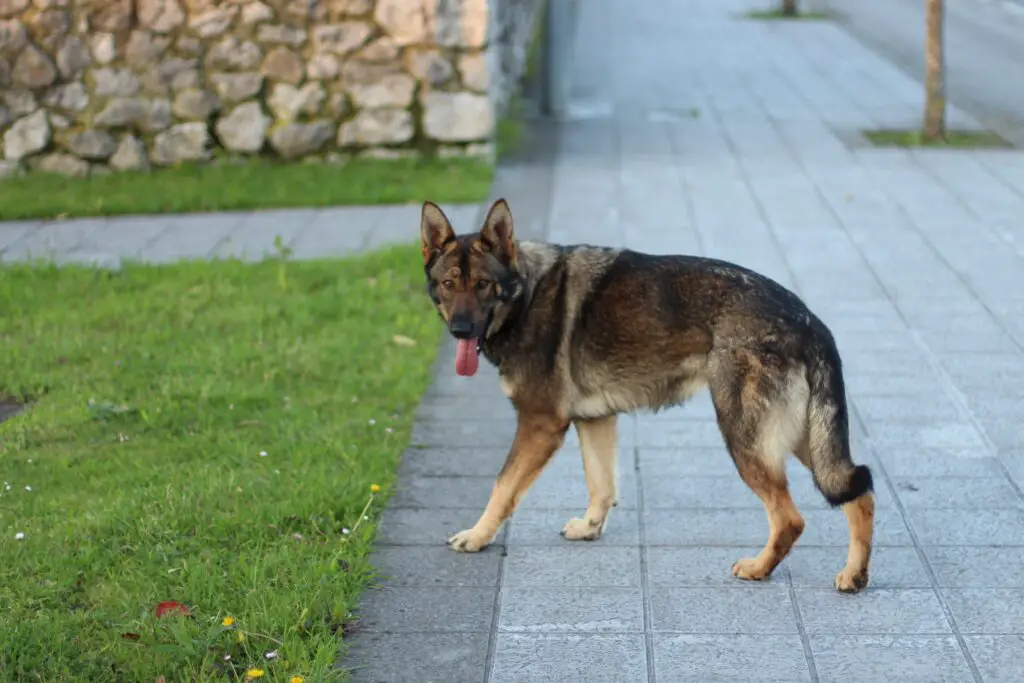
Distinctive Features of the DDR GSD
Here are some features that help distinguish the East German shepherd:
- Barrel chest
- Big bone structure
- Straight backline
- A massive head with broad ears
- Long double coat
- Massive shoulders
- Dark-colored coat- the DDR German shepherd has one of the darkest coats- you will find this dog with a black sable coat or sable. Pure solid black GSDs are there but can be hard to find.
- These dogs also have strict breeding guidelines.
The Personalities and Traits of the East German Shepherd
As from their origin, these dogs still retain what captain Max von Stephanitz had in his mind. Dogs who would be perfect working dogs and still function as companion pets.
So what are some of the traits and personality of the DDR German shepherd?
- Intelligent-as a service dog, such a trait is always important.
- Agile and fast- these dogs need to have such speed when chasing criminals.
- Strong sense of smell – a vital attribute that helps this dog when tracking or when scent trailing
- Confident and courageous – an attribute that is essential when this dog is faced with danger
Other attributes include devotion to work, highly protective, and well determined.
Also, if handled and socialized, the DDR German shepherd can be a trustworthy home companion. Also, this dog relates well with children.
Exercise Needs of a DDR German shepherd
As a working dog, this dog is always full of energy, that it’s always looking for ways to expel it.
Energy expelling exercises that will work for this dog include running, jogging, and swimming seasons.
Such exercises will help build the strong muscles of this dog. Although not a retriever dog, you can play fetch with the DDR German shepherd if you have a big space. All will come a long way in bringing out the best from this dog.
Also, metal stimulation is vital; all you need is to expose it to many mental challenges.
If not able, you can look for toys that will help challenge this dog’s intelligence. All these forms of exercise will come a long way in having a physically and mentally healthy dog.
Training
As working line dogs, intelligence is always an integral part of the East German shepherd breeding standards.
So, with its intelligence, expect all training seasons to be smooth. And to make it easier for you, start all training sessions when the dog is still a puppy.
First, ensure the dog respects you as the leader, as this dog thrives where there is authority.
Again, learn how to use your tone of voice when giving out any of the commands. Shouting or yelling at your DDR German shepherd will not bring the best out of this dog. Utmost, this dog will be full of fear and anxiety.
All you need is to use positive reinforcement when training this dog. If your dog does something remarkable, always reward it. The reward-based training will help the dog understand the behaviors you desire and the ones you dislike.
Again, don’t use backward ways like whipping or yelling at your dog to discipline it; you will not get the desired results. All you need is to learn how to ignore and not reward the behavior you dislike.
Another virtue you should adopt when training this dog is consistency. First, be consistent with the training sessions you have, have consistent training locations during the first few weeks, and still be consistent in your ways of rewarding the DDR German shepherd.
Also, be patient. All these virtues brought together will be hardy in making all the training sessions smooth for both you and the dog.
Socialization Is Vital
As a working line dog, the DDR German shepherd needs socialization. You need to expose this dog breed to lots of sights and sounds. As a protection dog, familiarize it with what can be a threat and what’s worth trusting.
Is Grooming A DDR German shepherd Any Different?
Grooming the DDR German shepherd dog is not different but still requires a dedicated handler. A handler who’s aware of how DDR German shepherds can shed.
With this dog’s double coat, having a comb, slicker brush, and dematting rake will help maintain its looks.
The comb and brush will help remove all the loose hair that may end up on your furniture. Additionally, the dematting rake will help undo all mats that may become uncomfortable for the dog.
Afterward, the bath sessions will still be minimal as you risk eroding your dog’s normal skin pH if overdone.
Other essential grooming habits that you should adopt are regular bruising of teeth, checking the ears after every two days, and clipping the nails every two weeks.
DDR German Shepherds And Children, How Do They Relate?
If socialized and trained, the DDR mingles with children cohesively. As a protection dog, the DDR will love children and still guard them whenever they are around. Female DDR German shepherds display protective instincts, unlike the males.
When together, the DDR German shepherd will guard the children rather than play with them. Also, playing with children is a form of dispensing any excess energy it could be having. Again children will help the dog flex its muscles which will come a long way in helping the DDR German shepherd become active.
Does The DDR German shepherd Still Retain the Guarding Abilities?
DDR German shepherds who still retain the original strains present during the 1940s to the 1989’s have outstanding guarding capabilities.
These dogs that have now spread to other parts of Europe have excelled now as guarding and protection dogs. The DDR German shepherd is still present in the disciplinary forces of Germany, where it still works as a search and rescue dog, guard dog and still competes in most sports championships.
One type of sport that these dogs still participate in Germany IPO test. This test checks for these vitals, tracking, obedience, and protection.
To date, with most professional bodies lowering their guard in controlling the breeding standards of the DDR, there has been a drop in the guarding abilities of this dog. Such an occurrence happens if such regulatory bodies allow low-quality DDR German shepherds to breed together or breed with other dog breeds. Such will help in diluting some guarding and protective abilities that are a hallmark of this dog breed.
With lowered breeding standards, the DDR German shepherd has developed a weaker physique and its athletic nature not compared to the original DDR’S that would guard and scale 6-8 feet of walls without struggling.
Where to Get a DDR German shepherd Dog Breed
Breeder
If you desire to find a pure DDR shepherd, you may stay longer before you find one. Also, it’s one of the coveted dog breeds you may have to go deep into your pockets to get a puppy DDR German shepherd. However, if you’re determined, such cannot be a hindrance.
Look for the original club of German shepherd often found in Germany. They will show you all the papers that show that this puppy is a pure breed. At this point, you will get all health clearance certificates that show this dog is free of hereditary diseases.
However, if you cannot get a purebred DDR, you can get a hybrid dog breed. Crossbreed DDR German shepherd dog breeds will still have the temperaments and behaviors that most protection dogs possess.
Rescue Center
Check at any rescue center and find whether it’s possible to find a pure DDR German shepherd dog breed. However, it’s not certain you may get one instantly.
How Much Is DDR German shepherd
A DDR German shepherd dog breed price will vary depending on some factors.
Such factors include the pedigree, any proven attributes of the dog, and location.
So how much is a puppy DDR German shepherd? A puppy, DDR German shepherd, will cost between $500 to $2000. Such price can even go higher than it’s a high valued dog breed.
Often getting this dog breed from a breeder will be much more expensive than getting your puppy from a rescue center.
What Is the Difference between a DDR German shepherds And a Czechoslovakia German Shepherd Dog Breed?
Is any of them superior to the other?
The Czech German shepherd originated from Czechoslovakia, and like the DDR shepherd, it had to protect and patrol the borders.
Additionally, this dog tends to have similar temperaments like the DDR German shepherd.
Here are some of the Czechoslovakia German shepherd dog breed characteristics:
- Loyal, graceful, and strong working desire
- They have powerful jaws and shoulders
- The backline is straighter than the DDR GSD
- Coat colors present in this dog breed- wolfish Gray, dark brown
- Among other GSD, this dog breed has the smallest ears.
- The Czechoslovakia German shepherd has strict breeding standards.
- The Czechoslovakia GSD grows slower than the DDR German shepherd dog breed.
- The work drive of Czechoslovakia is stronger than the DDR German shepherds.
- DDR German shepherd also tends to have black faces – often resembles like someone just dipped this dog inside a bag of coal.
Are DDR German Shepherds Likely To Get Hip Dysplasia?
With their strict breeding guidelines, the DDR German shepherds are less likely to acquire Hip dysplasia. However, that is not an assurance that this dog is free from this condition.
The reason being as a big-boned dog, hip dysplasia is one of the joint issues most likely to hit this dog breed. Another thing if you let your DDR GSD become obese, it will most likely strain its hips which can lead to hip dysplasia.
What are some of the Health Issues Likely to Hit the DDR German shepherd Dog?
Some of the conditions likely to hit a DDR German shepherd are osteoarthritis, Glaucoma, dilated cardiomyopathy, obesity, and skin diseases
Do DDR German Shepherds Have A Strong Prey Drive?
DDR German shepherds who are not socialized or well-trained will have strong prey drive, and you may see them chase small pets in your house. However, with the right training, such a predatory behavior can be erased with ease.
Final Thoughts
That’s all about the DDR GSD; as you have learned, it’s a high-energy dog that loves working, and such a dog loves an active family. If you’re lucky to have one in your family, you can attest how this dog is well-behaved and strong-willed.
Tell us your experience. Do you have this dog breed, or do you plan to have one?


